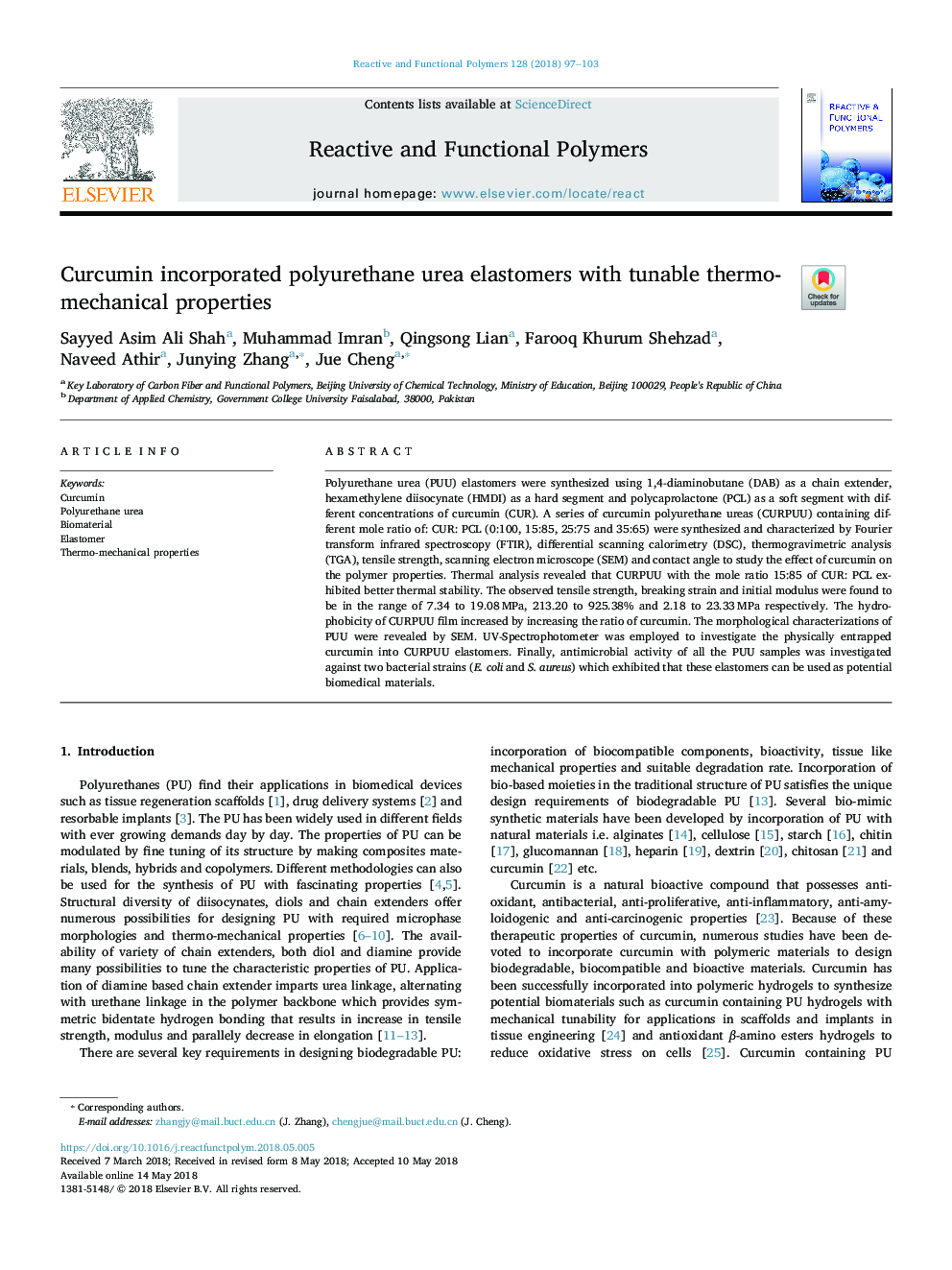| Article ID | Journal | Published Year | Pages | File Type |
|---|---|---|---|---|
| 7826202 | Reactive and Functional Polymers | 2018 | 7 Pages |
Abstract
Polyurethane urea (PUU) elastomers were synthesized using 1,4-diaminobutane (DAB) as a chain extender, hexamethylene diisocynate (HMDI) as a hard segment and polycaprolactone (PCL) as a soft segment with different concentrations of curcumin (CUR). A series of curcumin polyurethane ureas (CURPUU) containing different mole ratio of: CUR: PCL (0:100, 15:85, 25:75 and 35:65) were synthesized and characterized by Fourier transform infrared spectroscopy (FTIR), differential scanning calorimetry (DSC), thermogravimetric analysis (TGA), tensile strength, scanning electron microscope (SEM) and contact angle to study the effect of curcumin on the polymer properties. Thermal analysis revealed that CURPUU with the mole ratio 15:85 of CUR: PCL exhibited better thermal stability. The observed tensile strength, breaking strain and initial modulus were found to be in the range of 7.34 to 19.08â¯MPa, 213.20 to 925.38% and 2.18 to 23.33â¯MPa respectively. The hydrophobicity of CURPUU film increased by increasing the ratio of curcumin. The morphological characterizations of PUU were revealed by SEM. UV-Spectrophotometer was employed to investigate the physically entrapped curcumin into CURPUU elastomers. Finally, antimicrobial activity of all the PUU samples was investigated against two bacterial strains (E. coli and S. aureus) which exhibited that these elastomers can be used as potential biomedical materials.
Related Topics
Physical Sciences and Engineering
Chemistry
Organic Chemistry
Authors
Sayyed Asim Ali Shah, Muhammad Imran, Qingsong Lian, Farooq Khurum Shehzad, Naveed Athir, Junying Zhang, Jue Cheng,
